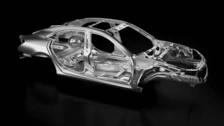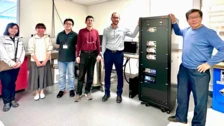
29.09.2023 by Aileen Sammler
Low-Temperature Differential Scanning Calorimetry for Metals
Amidst the energy transition, lightweight construction is gaining increasing importance in areas such as the automotive sector, aviation and transportation. In the context of electric mobility, for example, by reducing the weight of a car by 100 kg, an energy saving of up to 0.64 kWh per 100 km can be achieved. [1] Due to their high specific strength, aluminum alloys are central materials in constructive lightweight construction. By replacing steel components with aluminum alloys, the weight can be reduced by up to 30%.[2]
AlMgSi alloys consist of aluminum with magnesium and silicon as main alloying elements. These alloys are precipitation-hardened and can, for instance after a forming process, be further strengthened by a specific heat treatment.
Low-temperature differential scanning calorimeters (LT-DSC) are usually employed for the analysis of low-melting substances, such as polymers, and particularly feature high heat-flow sensitivity. LT-DSCs are also valuable tools for studying phase transformations in metals, including precipitation formation in AlMgSi alloys. By analyzing the heat flow associated with these transformations, researchers gain insights into the microstructural evolution and its impact on the alloy's properties.
In this Application Note, we analyze and determine precipitation of AlMgSi alloys by means of differential scanning calorimetry (DSC). The NETZSCH low-temperature DSC features a highly precise measuring sensor (enthalpy precision < 1% for Indium) and allows for measurements up to 750°C, depending on the cooling system used (according to the model).
[1] Helms, H., & Kräck, J.: Energy savings by light-weighting-2016 Update. Heidelberg: Institute for Energy and Environmental Research 2016
[2] Schlosser, J. et al.: Materials and simulation modelling of a crash-beam performance. A comparison study showing the potential for weight saving using warm-formed ultra-high strength aluminium alloys. In: Journal of Physics: Conference Series (2017), S. 896
New e-book “Thermal Properties of Metals and Alloys”
Our new booklet presents an introduction into the broad applications spectrum of thermoanalytical methods and illustrates how these can be used in determining thermophysical properties of metals and alloys.





